In search of the great eight
Published on November 20th, 2018
American Michael Hennessy is competing in the 2018 Route du Rhum-Destination Guadeloupe solo transatlantic race on his Owen Clarke designed Class40 Dragon. There were 53 Class40s when the race got underway on November 4, but hard times has reduced the field to 37 skippers in the class.
Hennessy stands 12th in the solo transatlantic race, and after 16 days of sailing, he discusses the sails doing the work:
Set a sail. Roll it out, sheet it on, trim it in. Watch the wind clock, roll it up, drop it down and do it again with a different sail. Watch the wind speed change, and do it again with a third sail. It’s like gears on a bike, where some gears are meant for going uphill, some for going downhill and some for the flat road. Use the wrong gear, and you are either working too hard, or not going fast enough.
Sails are no different, where some are for when the wind is at your back, some for when it is blowing in your face and some for when it blows from the side. Use the wrong sail and you either are going slower than you should or you are putting yourself in harm’s way.
Every sail change means humping a 50 to 60 lb sail across the deck to get it in position, drop or strike the old sail, hoist or launch the new into the sky, flake and bag the old sail that was replaced, and humping the old sail to its home on the rail. It’s the most draining, soul sucking and toughest job on the boat, and it never ends.
Bargaining doesn’t work – the wind does not care and your competitors who jump on the job before you will make miles on you. Sharing doesn’t work – you are the only one on the boat and no one else is going to answer the call.
The Class40 rule allows boats to bring a maximum of 8 sails. Four of those are predetermined by other Class rules or simple practicality:
1. Main Sail – Every boat has one of these, a big square top version of sail that sits behind the mast. On these boats, they have full battens, and have four reef points that allow me to incrementally reduce the surface area of the sail as the winds pick up. The Class rules allow this sail to be “exotic” or made of fabric other than a version of dacron and most are some combination of Twaron and Carbon.
2. Solent – also known by some as a jib or even genoa, or on some boats as the J1. This is the sail that attaches or is tacked on to the bow of the boat and then attaches on the mast about 8 feet down from the top of the mast. It sheets back to sheet leads that are at the mast and is shaped like a triangle, and the Class rules specify the maximum surface area of the Solent and Main combined to no more than 115 square meters. The solent can also be made of “exotics”, and is a sail that is used to sail upwind in moderate breeze, maybe 7 to 18 knots
3. Inner Stay Sail – also known as the Trinquette or the J2. This sail attaches on the deck a bit further back than the bow, and on the mast it attaches a few feet below the Solent. It is basically a smaller version of the Solent, about 2/3rds the surface area, and is also used to sail upwind but typically in winds between 18 and maybe 32 knots. It can also be made of exotics.
4. Storm Jib – also known by some as the Tormentina, or J3. This sail is also used to go upwind and is an even smaller version of the Solent, tacking even further back on the deck and further down on the mast. It less than half the surface area of the Solent, and Class rules mandate that it can only be made of a form of dacron and must meet a minimum standard for cloth weight to be able to stand up to the 35+ knots of wind this sail is meant to handle. If you see this sail going up, you know it’s going to get ugly.
Every Class40 carries those four sails, and they will take care of almost all forms of upwind sailing. The remaining four sails that a skipper is allowed to bring on board are left to the choice of the skipper and are meant to take care of sailing on the reach or running.
Reaching sails are known as Code sails, and running sails are known as Spinnakers. Since wind direction and wind speed can vary so much, if you had your choice you would definitely want to bring more than eight sails total which means there are some real trade-offs to be made when deciding what sails to bring.
For this race, I was collaborating with Dragon’s designer Merf Owen and her sailmaker Mark Washeim to come up with the best possible combination of sails that met three criteria:
• Durable enough to survive a hard fought race over thousands of miles.
• Designed to address the most likely wind conditions (speed and direction) that we would see during this race.
• Redundant against the chance of damage. The single most common reason for Class40s to fall out of the lead pack in the transatlantic races over the past decade has been damage to their big running spinnakers. It even happened to Dragon in this year’s Atlantic Cup where the loss of our big A2 spinnaker in the second hour of a 60 hour spinnaker run meant we were spat out the back of the fleet when all we had left were poor substitutes. I was determined to hedge this risk when it came to the RdR.
Mark and his team at Doyle Sailmakers have designed five generations of sails for Dragon and in the process have become the go-to designer of Class40 sails in the USA. Most of the US fleet carries examples of Mark’s work, but in this case Mark needed to know what sail package we wanted. This is where Merf came into play as he took historical weather files from the years 2000 through 2016 and ran a “virtual” Dragon down the Route du Rhum race course.
Using Dragon’s predicted boat speeds for the different wind combinations that were actually seen in each of those years, Merf could route the course that Dragon would have taken to maximize her speed, and he did that assuming a start 10 days prior to the usual start on the first Sunday in November, and the 10 days that follow that usual start. Twenty routes a year for 16 years.
Each of those 320 outcomes told us how much time was being spent at different wind directions and different wind speeds. Not hypothetical winds, but the real deal. The real conditions for that year and that start day. Fall-time conditions on the North Atlantic follow some fairly predictable patterns, and in fact the outcomes of the various routing exercises did fall into some patterns.
In many years, the first third of the race is beating, the second third of the race is reaching and the last third of the race is running. However, there is also a bias based on which side, north or south, is favored.
In years where north is favored, the routing takes you over top of the Azores high into the North Atlantic with more beating in the first half, more reaching in the second half. In years where the south is favored the routing takes you under the bottom of the Azores high, beating across the Bay of Biscay, a relatively short reach down off the coast of Spain and Portugal, and then a long run across the trades.
All of Merf’s math and outcomes pointed to the fact that there was very low probability of light air beating, and surprisingly little probability of very heavy air running or reaching. The vast majority of the sailing is in the mid-teens wind speeds, and the direction depends on the year but is a combination of early upwind work followed by lots of either reaching or running.
With that in mind we settled on the last four sails:
1. A2 Spinnaker – Our biggest downwind running sail, cut for deep VMG running.
2. A4 Spinnaker – Something to serve as a back up for the A2 in case it gets damaged. It is a heavier nylon cloth, and a little bit smaller so it can be used in somewhat stronger winds, but it also is versatile enough to stand in for the A2 if for some reason that critical sail is damaged and can’t come out to play.
3. A5 Spinnaker / Code – This one is really specific to the Route du Rhum. Unlike the other spinnakers, it is a roller furler sail and it’s not made out of nylon but instead a beefy pentex cloth. It is also neither really a spinnaker nor really a code but instead cut to favor that middle ground of deeper reaching and some running. Smaller than the A4, it can be used in heavier air but it won’t go as deep as either the A2 or the A4.
4. Code 5 – This is a true reaching sail. I have had some version of this sail in every generation that has been made since the boat has been launched and it is an unbelievable utility in-fielder. In light air, it can go pretty high upwind, and in really light air it can go deep downwind and still hold its shape better than a nylon A2. But its sweet spot is reaching in mid to low teen wind speeds.
All the sails are new for this race, and all are the best that Mark has ever made for me. The finish work is impeccable, and a huge amount of effort has been made to make them the lightest possible sail that can still get the job done. He found 16 kg of savings in the combination of the Main and Solent alone, a 20% weight savings that goes right back into improved righting moment for the boat. Everything necessary, nothing superfluous.
Now it is my job to launch these sails and strike them. Over and over and over and over again.
Event details – Ranking – Tracker – Facebook
Background: The 11th edition and 40th anniversary staging of the Route du Rhum-Destination Guadeloupe solo transatlantic race got underway on November 4. Held ever four years, this iconic 3,542-nautical mile course takes the record entry of 123 skippers in six divisions – Ultime, Multi 50, Imoca 60, Class 40, Rhum Multi, and Rhum Mono – from the start off the Brittany port of Saint Malo (France) to Guadeloupe.


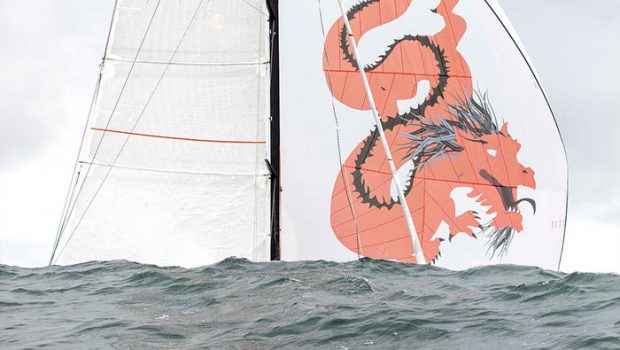


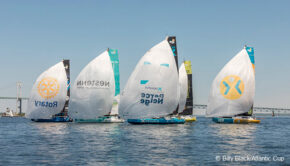
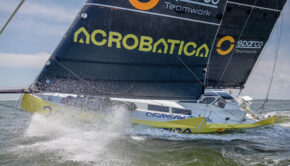
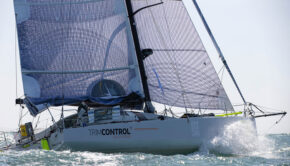
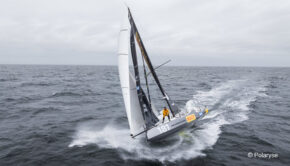
 We’ll keep your information safe.
We’ll keep your information safe.